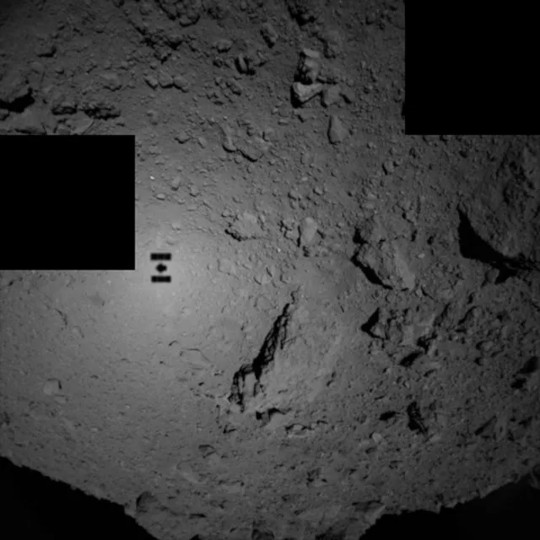Japanese probe brought to Earth soil samples from the asteroid Ryugu
Japanese probe brought to Earth soil samples from the asteroid Ryugu
A capsule with soil collected by the Hayabusa-2 space probe on the Ryugu asteroid was delivered from Australia to Japan, NHK TV channel reports.
The plane with the capsule on Board landed at Haneda international airport, where it will be taken to the main laboratory for additional research.

On Saturday, December 5, the capsule was successfully separated from the Hayabusa-2 probe at an altitude of 223 thousand kilometers from Earth and began to descend to the surface of the planet. On Saturday evening, Japanese time, the capsule landed safely In the desert in southern Australia.
By Sunday morning, the capsule was flown by helicopter to JAXA's local headquarters. According to the Agency's representative, " the capsule is in perfect condition after landing." After that, experts analyzed the gases on Monday, but have not yet been able to confirm that they are derived from samples from the asteroid.
The probe itself changed its trajectory at a distance of 210 thousand kilometers from Earth and headed for its next mission-observation of the asteroid 1998KY26. An asteroid with a diameter of 30 meters rotates between the orbits of Earth and Mars and is similar in composition to Ryuga. Unlike the mission to Ryuga, the landing of vehicles on its surface is not planned. Hayabusa-2 will only monitor its surface.
The Hayabusa-2 space probe was launched to the Ryugu asteroid in 2014. Ryugu is 340 million kilometers away from Earth. Its diameter is about 900 meters. The Hayabusa-2 space probe has twice successfully landed on the asteroid's surface to collect soil and dust samples. The probe managed to use an explosive device to "shoot" a projectile into the surface of the Ryugu asteroid and create the world's first artificial crater on the surface of the asteroid.
This allowed us to take dust and soil that lay deeper than the surface of the space body. Scientists believe that the rock samples obtained from the bowels of the asteroid, mostly preserving the properties of the matter since the emergence of the Solar system, will enable mankind to get closer to unraveling the Solar system formation and the emergence of life. Scientists also found out that Ryugu has water-containing minerals with elements of oxygen and hydrogen, which was an event in the history of human space exploration.
About author:
Serg Toporkov Ufologist, Ph.D., blogger, I go on my own expeditions for UFOs. I use scientific methods to investigate the UAP phenomenon. Write to me |
Related tags:
Hayabusa-2 Ryugu asteroidRandom UFO or conspiracy article
The Voronezh UFO incident. What happened in September 1989?
 this incident occurred in 1989 and was well documented, including on video. It is rare to find real evidence of UFOs, which has been confirmed by numerous witnesses.
this incident occurred in 1989 and was well documented, including on video. It is rare to find real evidence of UFOs, which has been confirmed by numerous witnesses.
